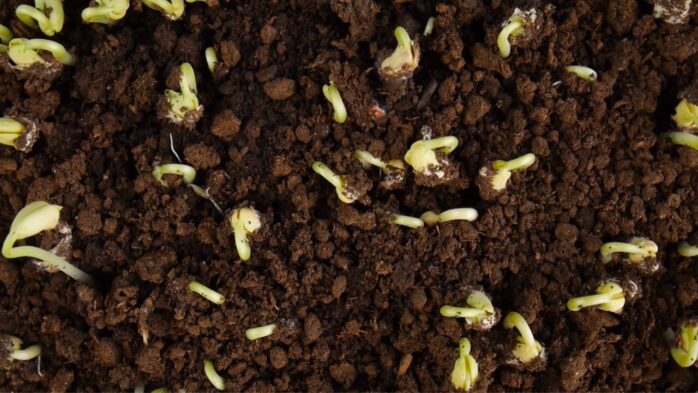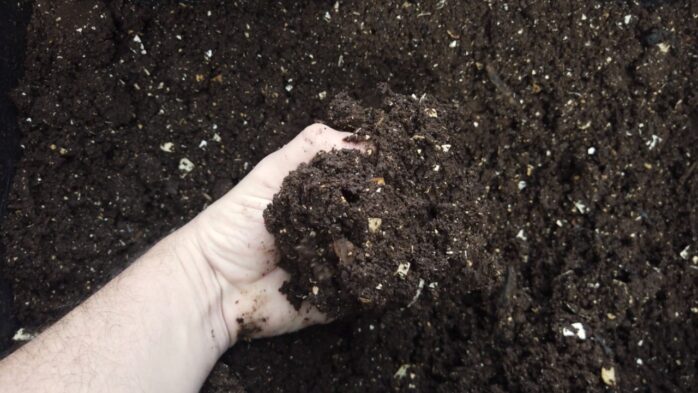
A thriving farm relies on the vitality of its soil. This complex, living system forms the foundation of all agriculture, feeding our crops and, by extension, the world. Yet, today’s farming practices often neglect the very bedrock of their productivity, leading to a global soil health crisis.
Depleted nutrients, compaction, and loss of organic matter can leave once fertile fields barren and unproductive. This article seeks to shed light on how to rejuvenate and maintain your soil for sustained agricultural health.
Understanding the Soil’s Lifeline
Soil is not merely dirt. It is a vibrant matrix of minerals, organic matter, water, air, and countless organisms, all working in harmony to support plant life. This complex ecosystem can thrive when adequately cared for, but conventional farming practices often disrupt this intricate balance, stripping the soil of its essential nutrients and leading to degradation.
The Role of Nitrogen in Soil Health
Of all the nutrients plants require, nitrogen holds a unique place. Essential for the formation of proteins and the process of photosynthesis, nitrogen is the lifeblood of any thriving plant.
Farmers have traditionally replenished soil nitrogen with synthetic fertilizers, but overreliance on these can lead to soil degradation and environmental pollution. A more sustainable option would be to utilize a nitrogen fertilizer liquid.
According to Agxplore.com, ‘The health of our soil forms the foundation of the entire agricultural system. It is not merely a matter of crop yield, but of the sustainability and resilience of agriculture as a whole.
From the smallest microorganisms to the largest machinery, each aspect plays a part in the complex symphony that is soil health. As farmers and stewards of the land, we must strive to understand and nurture this invaluable resource for the benefit of current and future generations.’
Liquid nitrogen fertilizers can be a more efficient and eco-friendly alternative. They offer quick absorption, uniform distribution, and reduced risk of nitrogen runoff, a major cause of water pollution. But, like all good things, it should be used in moderation.
Overapplication can disrupt the soil ecosystem, while underuse will leave your crops undernourished. Striking the right balance is key to maintaining soil health.
Embracing Sustainable Practices
In addition to balanced fertilization, incorporating sustainable farming practices can significantly improve soil health. Practices such as crop rotation, cover cropping, and reduced tillage help to increase biodiversity, manage pests, prevent soil erosion, and enhance nutrient availability.
Crop rotation involves alternating different crop types in successive seasons. This not only breaks the lifecycle of pests and diseases, but different crops also have varied nutrient needs, preventing the soil from becoming nutrient-depleted.
Cover cropping, on the other hand, is an excellent practice for improving soil structure, enhancing organic matter content, and preventing soil erosion. Leguminous cover crops can even fix atmospheric nitrogen, reducing the need for synthetic nitrogen fertilizers.
Restoring Organic Matter
Organic matter, the decaying remains of plants and animals, is critical for soil health. It improves soil structure, increases its water-holding capacity, and serves as food for beneficial soil microorganisms. Regular additions of compost, green manures, or organic mulches can help to rebuild this vital component of healthy soil.
Understanding Soil pH and Its Importance
Soil pH, which is a measure of its acidity or alkalinity, plays a significant role in the overall health of your soil. It influences the availability of nutrients to plants and the activity of soil organisms. Some crops prefer acidic soil, while others thrive in alkaline or neutral soil.
Regular soil testing can help monitor soil pH and guide the application of amendments like lime or sulfur to adjust it as necessary. Maintaining the appropriate pH for your crops is a crucial step in revitalizing your soil.
The Power of Microbes in Soil Health
The soil is teeming with billions of microscopic organisms, including bacteria, fungi, protozoa, and nematodes. These soil microbes play crucial roles in organic matter decomposition, nutrient cycling, disease suppression, and even improving plant stress tolerance.
Encouraging microbial activity in your soil – through practices like composting, reducing tillage, and minimizing chemical inputs – can lead to healthier and more productive soil.
Conservation Tillage: A Soil-Friendly Practice
Tillage is a common agricultural practice that involves the mechanical agitation of soil to prepare for planting. While traditional tillage can control weeds and mix in soil amendments, it can also lead to soil compaction, erosion, and loss of organic matter.
Conservation tillage, including practices like no-till or reduced-till, can mitigate these negative impacts, preserving soil structure and enhancing its water retention capacity.
The Benefits of Agroforestry
Agroforestry, the practice of integrating trees or shrubs with crops or livestock systems, can also contribute to soil health. The deep roots of trees can draw up nutrients from the subsoil, reduce soil erosion, and improve water infiltration. In addition, fallen leaves and twigs add organic matter to the soil, and certain trees can fix atmospheric nitrogen, further enriching the soil.
Understanding the Role of Soil Minerals
Minerals, including both macronutrients (like nitrogen, phosphorus, and potassium) and micronutrients (like iron, zinc, and copper), are vital for plant growth. Different soils contain varying mineral profiles, affecting their fertility. Regular soil testing can reveal any mineral deficiencies, guiding the application of mineral fertilizers or amendments.
The Impacts of Climate Change on Soil Health
Climate change poses a significant threat to soil health. Rising temperatures can accelerate the decomposition of organic matter, reducing soil fertility. Extreme weather events can lead to soil erosion and nutrient leaching. Adopting climate-smart agricultural practices, like cover cropping and conservation tillage, can help build resilience and mitigate the impacts of climate change on your soil.
Role of Technology in Soil Health Management
Advancements in technology can assist in better soil health management. Tools like remote sensing and GPS can map soil variability across a field, guiding targeted soil amendment applications. Meanwhile, soil moisture sensors and automated irrigation systems can optimize water usage, reducing water logging and soil compaction.
Incorporating Permaculture Principles
Permaculture, a system of agricultural and social design principles, can be a powerful tool for soil health. It centers on mimicking patterns observed in natural ecosystems, promoting sustainability, self-sufficiency, and biodiversity. In terms of soil health, permaculture encourages practices like composting, mulching, and diversifying plant species.
These actions aid in replenishing nutrients, conserving water, suppressing weeds, and preventing soil erosion. By adopting permaculture principles, we can work with nature rather than against it, fostering healthier soil and more resilient agricultural systems.
Conclusion
Revitalizing your soil requires a multi-faceted approach, encompassing balanced fertilization, organic matter restoration, and a host of sustainable practices. From understanding the intricacies of soil pH and microbes to leveraging technology for better soil management, each aspect is crucial in the journey towards healthier and more productive soil.
By embracing these practices, we contribute not only to our own agricultural success but also to the sustainability and resilience of global agriculture.












